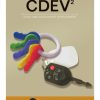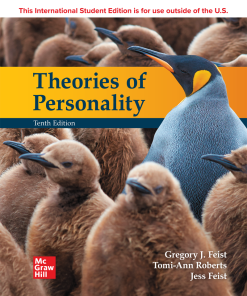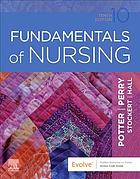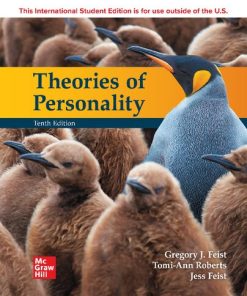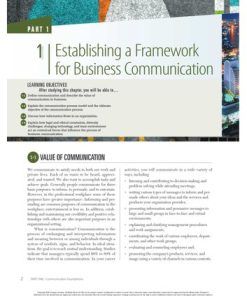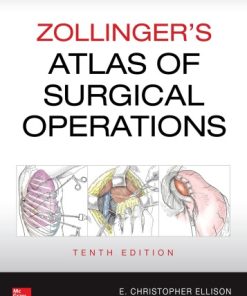(EBook PDF) Personality 10th Edition by Jerry Burger 9798214350370 full chapters
$50.00 Original price was: $50.00.$25.00Current price is: $25.00.
Personality 10th Edition by Jerry M. Burger – Ebook PDF Instant Download/DeliveryISBN: 9798214350370
Full download Personality 10th Edition after payment
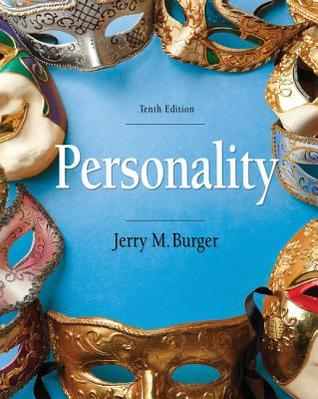
Product details:
ISBN-13 : 9798214350370
Author: Jerry M. Burger
The respected and recognized best seller in the market, Jerry Burger’s PERSONALITY is a solid mid-level book that fuses the theory-based approach to personality with the research-based approach to give students a comprehensive view of the field. For each major theoretical approach to personality, Burger pairs “theory, application, and assessment” chapters with chapters covering relevant programs of research. Biographical sketches of theorists and accounts of the stories behind influential research programs help students understand how classic and contemporary findings relate to each other, and reinforce the connection between theory and research. Personality scales throughout the book promote students’ hands-on interaction with the material.
Personality 10th Table of contents:
1. What Is Personality?
1.1. The Person and the Situation
Burger Section Quiz 1.1
1.2. Defining Personality
Burger Section Quiz 1.2
1.3. Six Approaches to Personality
Two Examples: Aggression and Depression
Burger Section Quiz 1.3
1.4. Personality and Culture
Burger Section Quiz 1.4
1.5. The Study of Personality: Theory, Application, Assessment, and Research
Burger Section Quiz 1.5
Summary
Key Terms
Burger Chapter Quiz
2. Personality Research Methods
2.1. The Hypothesis-Testing Approach
Theories and Hypotheses
Experimental Variables
Manipulated versus Nonmanipulated Independent Variables
Prediction versus Hindsight
Replication
Burger Section Quiz 2.1
2.2. The Case Study Method
Burger Section Quiz 2.2
2.3. Statistical Analysis of Data
Statistical Significance
Correlation Coefficients
Burger Section Quiz 2.3
2.4. Personality Assessment
Reliability
Validity
Burger Section Quiz 2.4
Summary
Key Terms
Burger Section Quiz
3. The Psychoanalytic Approach
3.1. Freud Discovers the Unconscious
Burger Section Quiz 3.1
3.2. The Freudian Theory of Personality
The Topographic Model
The Structural Model
Libido and Thanatos
Defense Mechanisms
Psychosexual Stages of Development
Getting at Unconscious Material
Burger Section Quiz 3.2
3.3. Application: Psychoanalysis
Burger Section Quiz 3.3
3.4. Assessment: Projective Tests
Some Popular Projective Tests
Evaluation of Projective Tests
Burger Section Quiz 3.4
3.5. Strengths and Criticisms of Freud’s Theory
Strengths
Criticisms
Burger Section Quiz 3.5
Summary
Key Terms
Burger Section Quiz
4. The Freudian Approach
4.1. Dream Interpretation
The Meaning of Dream Content
The Function of Dreams
Interpreting the Evidence
Burger Section Quiz 4.1
4.2. Defense Mechanisms
Identifying and Measuring Defense Mechanisms
Developmental Differences
Defensive Style
Burger Section Quiz 4.2
4.3. Humor
Freud’s Theory of Humor
Research on Freud’s Theory of Humor
Burger Section Quiz 4.3
4.4. Hypnosis
What Is Hypnosis?
Hypnotic Responsiveness
Burger Section Quiz 4.4
Summary
Key Term
Burger Section Quiz
5. The Psychoanalytic Approach
5.1. Limits and Liabilities of Freudian Theory
Burger Section Quiz 5.1
5.2. Alfred Adler
Striving for Superiority
Parental Influence on Personality Development
Birth Order
Burger Section Quiz 5.2
5.3. Carl Jung
The Collective Unconscious
Some Important Archetypes
Evidence for the Collective Unconscious
Burger Section Quiz 5.3
5.4. Erik Erikson
Personality Development Throughout the Life Cycle
Burger Section Quiz 5.4
5.5. Karen Horney
Neurosis
Feminine Psychology
Burger Section Quiz 5.5
5.6. Application: Psychoanalytic Theory and Religion
Burger Section Quiz 5.6
5.7. Assessment: Personal Narratives
Measuring Personality with Personal Narratives
Generativity and Life Stories
Burger Section Quiz 5.7
5.8. Strengths and Criticisms of Neo-Freudian Theories
Strengths
Criticisms
Burger Section Quiz 5.8
Summary
Key Terms
Burger Chapter Quiz
6. The Neo-Freudian Theories
6.1. Anxiety and Coping Strategies
Coping with Anxiety
Types of Coping Strategies
How Effective Are Coping Strategies?
Coping Flexibility and Resilience
Burger Section Quiz 6.1
6.2. Psychoanalytic Concepts and Aggression
Frustration and Aggression
Displaced Aggression
Catharsis and Aggression
Burger Section Quiz 6.2
6.3. Attachment Style and Adult Relationships
Object Relations Theory and Attachment Theory
Adult Attachment Styles
Alternate Models and Measurement
Attachment Style and Romantic Relationships
Burger Section Quiz 6.3
Summary
Key Terms
Burger Section Quiz
7. The Trait Approach
7.1. The Trait Approach
Burger Section Quiz 7.1
7.2. Important Trait Theorists
Gordon Allport
Henry Murray
Burger Section Quiz 7.2
7.3. Factor Analysis and the Search for the Structure of Personality
The Big Five
Ongoing Questions Related to the Big Five Model
Burger Section Quiz 7.3
7.4. The Situation versus Trait Controversy
Criticism of the Trait Approach
In Defense of Personality Traits
Burger Section Quiz 7.4
7.5. Application: The Big Five in the Workplace
Burger Section Quiz 7.5
7.6. Assessment: Self-Report Inventories
The Minnesota Multiphasic Personality Inventory
Problems with Self-Report Inventories
Burger Section Quiz 7.6
7.7. Strengths and Criticisms of the Trait Approach
Strengths
Criticisms
Burger Section Quiz 7.7
Summary
Key Terms
Burger Section Quiz
8. The Trait Approach
8.1. Achievement Motivation
Gender, Culture, and Achievement
Attributions
Achievement Goals
Burger Section Quiz 8.1
8.2. Type A, Hostility and Health
Type A as a Personality Variable
Hostility and Health
Burger Section Quiz 8.2
8.3. Social Anxiety
Characteristics of Socially Anxious People
Explaining Social Anxiety
Burger Section Quiz 8.3
8.4. Emotions
Emotional Affectivity
Affect Intensity
Emotional Expressiveness
Burger Section Quiz 8.4
8.5. Optimism and Pessimism
Dealing with Adversity
Optimism and Health
Burger Section Quiz 8.5
Summary
Key Terms
Burger Section Quiz
9. The Biological Approach
9.1. Hans Eysenck’s Theory of Personality
The Structure of Personality
A Biological Basis for Personality
Physiological Differences: Stimulation Sensitivity and Behavioral Activation/Inhibition Systems
Burger Section Quiz 9.1
9.2. Temperament
Temperament and Personality
Inhibited and Uninhibited Children
Burger Section Quiz 9.2
9.3. Evolutionary Personality Psychology
Natural Selection and Psychological Mechanisms
Anxiety and Social Exclusion
Burger Section Quiz 9.3
9.4. Application: Children’s Temperaments and School
Temperament and Academic Performance
Matching Temperament and Teaching
Burger Section Quiz 9.4
9.5. Assessment: Brain Electrical Activity and Cerebral Asymmetry
Measuring Brain Activity
Cerebral Asymmetry
Individual Differences in Cerebral Asymmetry
Burger Section Quiz 9.5
9.6. Strengths and Criticisms of the Biological Approach
Strengths
Criticisms
Burger Section Quiz 9.6
Summary
Key Terms
Burger Section Quiz
10. The Biological Approach
10.1. Heritability of Personality Traits
Separating Environmental from Genetic Influences
Interpreting the Heritability Findings
Burger Section Quiz 10.1
10.2. Extraversion–Introversion
The Heritability of Extraversion
Extraversion and Preferred Arousal Level
Extraversion and Happiness
Burger Section Quiz 10.2
10.3. Evolutionary Personality Theory and Mate Selection
What Men Look for in Women
What Women Look for in Men
Conclusions and Limitations
Burger Section Quiz 10.3
Summary
Key Term
Burger Section Quiz
11. The Humanistic Approach
11.1. The Roots of Humanistic Psychology
11.2. Key Elements of the Humanistic Approach
Personal Responsibility
The Here and Now
The Experience of the Individual
Personal Growth
Burger Section Quiz 11.2
11.3. Carl Rogers
The Fully Functioning Person
Anxiety and Defense
Conditions of Worth and Unconditional Positive Regard
Burger Section Quiz 11.3
11.4. Abraham Maslow
Motivation and the Hierarchy of Needs
Misconceptions About Maslow’s Need Hierarchy
The Study of Psychologically Healthy People
Burger Section Quiz 11.4
11.5. The Psychology of Optimal Experience
Optimal Experience
Finding Happiness in Everyday Activities
Burger Section Quiz 11.5
11.6. Application: Person-Centered Therapy
Burger Section Quiz 11.6
11.7. Assessment: The Q-Sort Technique
Burger Section Quiz 11.7
11.8. Strengths and Criticisms of the Humanistic Approach
Strengths
Criticisms
Burger Section Quiz 11.8
Summary
Key Terms
Burger Section Quiz
12. The Humanistic Approach
12.1. Self-Disclosure
Disclosure Reciprocity
Self-Disclosure among Friends and Romantic Partners
Disclosing Men and Disclosing Women
Disclosing Traumatic Experiences
Burger Section Quiz 12.1
12.2. Loneliness
Chronically Lonely People
The Causes of Loneliness
Burger Section Quiz 12.2
12.3. Self-Esteem
Self-Esteem and Reaction to Failure
Contingencies of Self-Worth
Self-Esteem and Culture
Burger Section Quiz 12.3
12.4. Solitude
Time Alone
Individual Differences in Preference for Solitude
Burger Section Quiz 12.4
Summary
Key Terms
Burger Section Quiz
13. The Behavioral/Social Learning Approach
13.1. Behaviorism
13.2. Basic Principles of Conditioning
Classical Conditioning
Operant Conditioning
13.3. Social Learning Theory
13.4. Social-Cognitive Theory
Reciprocal Determinism
Imagination and Self-Regulation
Observational Learning
13.5. Application: Conditioning Principles and Self-Efficacy in Psychotherapy
Behavioral Explanations of Psychological Disorders
Using Conditioning Principles in Psychotherapy
Self-Efficacy
13.6. Assessment: Behavior Observation Methods
Direct Observation
Self-Monitoring
Observation by Others
13.7. Strengths and Criticisms of the Behavioral/Social Learning Approach
Strengths
Criticisms
Summary
Key Terms
Burger Section Quiz
14. The Behavioral/Social Learning Approach
14.1. Gender Roles
Individual Differences: Masculinity and Femininity
Gender Type and Well-Being
Gender Type and Interpersonal Relationships
Social Pressure to Act Masculine or Feminine
Unmitigated Agency and Unmitigated Communion
Burger Section Quiz 14.1
14.2. Observational Learning of Aggression
Bandura’s Four-Step Model
Mass Media Aggression and Aggressive Behavior
Violent Video Games
Burger Section Quiz 14.2
14.3. Learned Helplessness
Learning to Be Helpless
Learned Helplessness in Humans
Some Applications of Learned Helplessness
Burger Section Quiz 14.3
14.4. Locus of Control
Locus of Control and Well-Being
Locus of Control and Health
Burger Section Quiz 14.4
Summary
Key Terms
Burger Section Quiz
15. The Cognitive Approach
15.1. Personal Construct Theory
Personal Construct Systems
Inadequate Personal Constructs
Burger Section Quiz 15.1
15.2. Cognitive Personality Variables
Burger Section Quiz 15.2
15.3. Cognitive Representations of the Self
Self-Schemas
Possible Selves
Burger Section Quiz 15.3
15.4. Application: Cognitive (Behavior) Psychotherapy
Rational Emotive (Behavior) Therapy
Burger Section Quiz 15.4
15.5. Assessment: The Repertory Grid Technique
Burger Section Quiz 15.5
15.6. Strengths and Criticisms of the Cognitive Approach
Strengths
Criticisms
Burger Section Quiz 15.6
Summary
Key Terms
Burger Chapter Quiz
16. The Cognitive Approach
16.1. Cognitions and Aggression
General Aggression Model
Reactive Aggression in Boys
Burger Section Quiz 16.1
16.2. Gender, Memory, and Self-Construal
Emotional Memories
Memories about Relationships
Burger Section Quiz 16.2
16.3. Cognitions and Depression
Negative Schemas
Negative Cognitive Style
Burger Section Quiz 16.3
People also search for Personality 10th:
borderline personality disorder
narcissistic personality disorder
16 personality test
infj personality
histrionic personality disorder
Tags:
Personality,Jerry Burger,
You may also like…
Psychology - Cognitive Psychology
Politics & Philosophy - Social Sciences
Medicine - Pharmacology
Biology and other natural sciences
Medicine - Medicine & Nursing Reference
Technique - Communication
BCOM 10: Business Communication 10th Edition Carol M. Lehman



